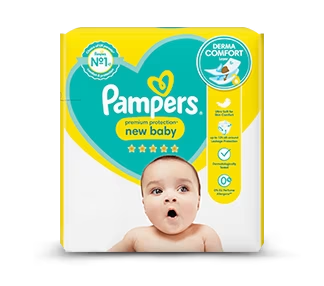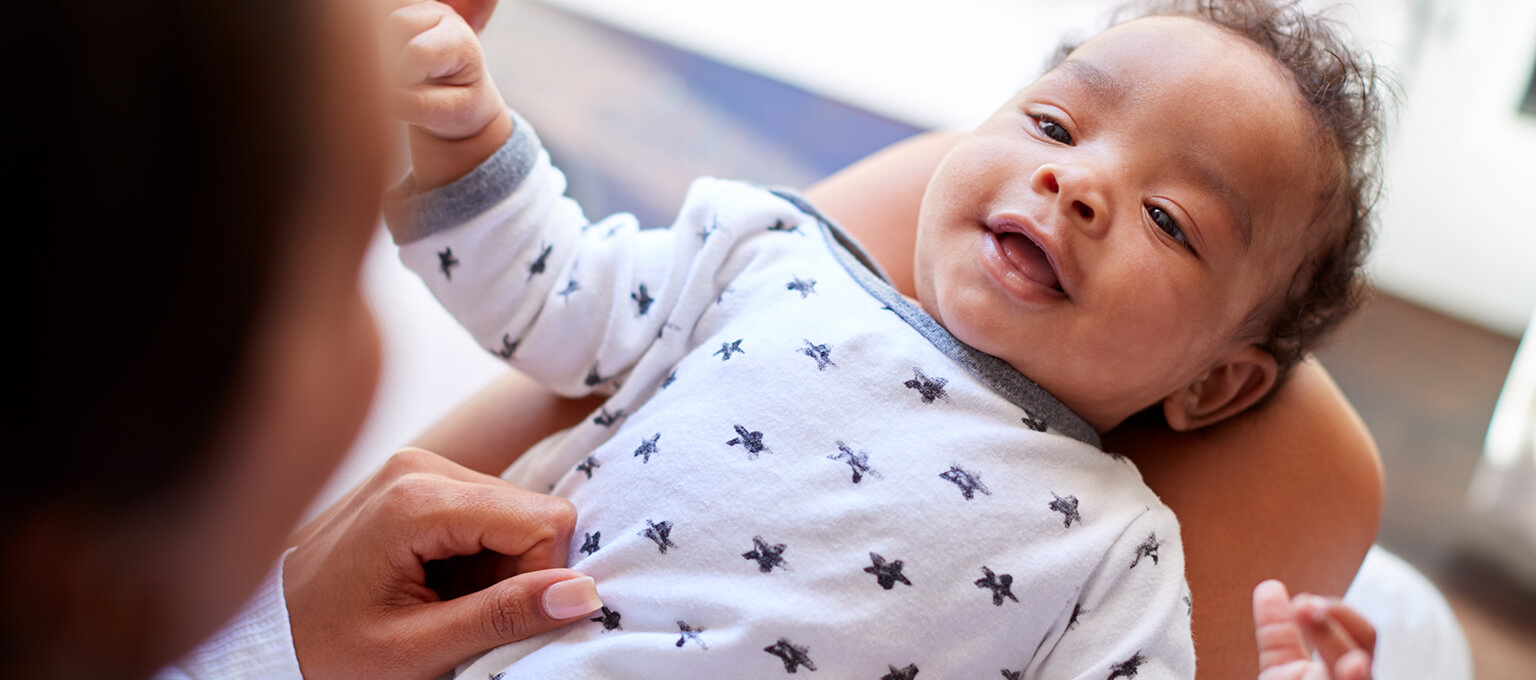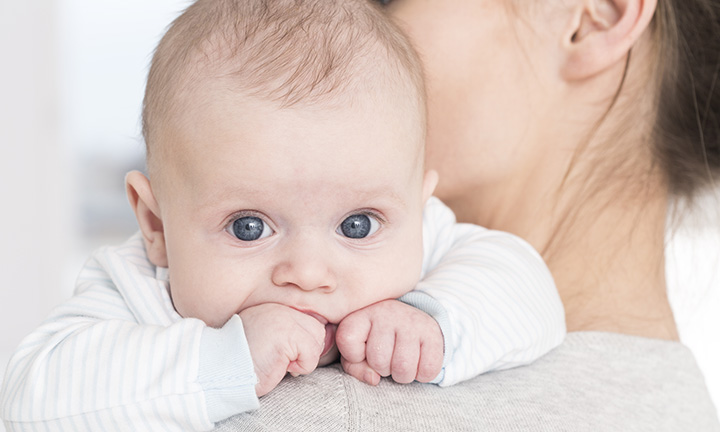
Baby Reflexes Explained
Key Takeaways
You may be surprised at how many things your newborn baby can do – from smiling to stepping with the feet and turning the head as you stroke your little one’s cheek. In the first weeks and months after birth, however, many of your newborn’s actions are actually reflexes—reactions that happen automatically. Learn about common baby reflexes such as the startle reflex, the stepping reflex, the grasp reflex and more.
What Are Baby Reflexes?
A reflex is an automatic response to stimuli. For example, if you put your finger in your baby’s mouth, your little one will instinctively suck on it. Or your infant might shut his or her eyes in response to a bright light.
Some reflexes are very important for your baby’s survival – for example, the sucking reflex is essential for your newborn to be able to feed.
A reflex means that your baby is reacting involuntarily and not choosing a certain behavior. It’s not just babies who have reflexes—adults have them, too. But this article focuses on some of the reflexes that newborn babies have. Most of the baby reflexes described here (except the sucking reflex) disappear after a few months, to be replaced by more deliberate movements as your baby’s motor skills continue to develop.
Rooting Reflex
The rooting reflex is what helps your baby find your nipple when breastfeeding for the first time. To see this ‘looking-for-the-nipple’ reflex in action, simply stroke your baby’s cheek or mouth with your finger, and your infant will automatically turn his or her head toward your hand. You can use this reflex to allow your child to breastfeed on demand by self-attaching:
Read more about different breastfeeding positions.
Sucking Reflex
Your baby develops the sucking reflex even before being born. If you had an ultrasound while you were pregnant, you may have seen your baby sucking on her thumb while still in the uterus.
After being born, your baby will automatically start sucking when your nipple touches the roof of his or her mouth. If you’re giving her formula or expressed breast milk from a bottle, this reflex happens in response to the teat of the bottle, too. Sucking is actually a very complex skill for a newborn, so despite it being a reflex, some babies don’t suck efficiently at first. Over time, they get the hang of it.
Startle Reflex
A reflex you may notice in your baby’s first month is known as the startle (or Moro) reflex. If your baby is startled, for example by a loud noise or sudden movement, your little one will respond by throwing his or her arms and legs outward while extending the neck, then quickly pulling the arms and legs back in. Your infant may also cry if startled or scared. Sometimes, your baby may be startled by the sound of his or her own crying, triggering the startle reflex again. This reflex typically disappears after two or three months.
Smile Reflex
You may notice your baby smiling from birth, but in the first few weeks this is often just a reflex – an automatic response to some internal stimulus – and not a true ‘social smile’. Cute as they are, these little grins are not yet the ‘real’ smiles you’re eagerly awaiting, which will happen in response to something your baby finds interesting or amusing. During the second month, though, your little one may start smiling in response to things you say and do. These are ‘true’ smiles that you might see when you make a silly face or give your baby a little tickle. In the meantime, just think of it as your baby getting in some practice so that those proper smiles – when they do arrive – will be sure to melt your heart!

Tonic Neck Reflex
The tonic neck reflex is a simple but funny reflex. If your baby turns his or her head to one side, you may notice the arm on the same side straightening out and the opposite arm bending, as if your child is about to start fencing. En garde! Although you might associate this pose with fencing, it might also look like your baby is adopting the pose of a little archer – a tiny cupid preparing to shoot that arrow straight into your heart!
Grasp Reflex
Stroke the inside of your baby’s hand and you’ll see this reflex in action. Those little fingers will curl around yours in a tight grasp. Your baby’s grip is quite strong. If you put a rattle or some other toy in your newborn’s hand he or she will hold on tight! Just be aware that this is a reflex, and your baby can let go at any time. This means your little one may drop the rattle or let go of your finger without notice.
Stepping Reflex
You may be surprised to see your baby stepping in the first two months whenever you hold your infant upright over a flat surface (while being careful to supporting the head). While being held in this position, as soon as the bottoms of your baby’s feet touch a flat surface your newborn will start stepping up and down. Keep in mind that this is just a reflex and not a sign that your baby is getting ready to start walking. You’ll have to wait a little while longer for those true first steps that signal the start of toddlerhood.
Tongue Thrust Reflex
Babies are born with the tongue thrust reflex. If you try to insert something into your baby’s mouth (like a spoon, for example), your child will push it out with the tongue. This reflex disappears from around six months old. When the tongue thrust reflex disappears, it is a sign that your baby could be ready to try solid foods.
FREQUENTLY ASKED QUESTIONS
Some of the reflexes that babies are born with include the
- Rooting reflex – searching for a nipple when a cheek is stroked or touched
- Sucking reflex. Sucking when the nipple or a feeding bottle teat touches the roof of the mouth
- Startle reflex. Throwing out the arms and legs when startled
- Grasp reflex. Gripping onto something that touches the inside of the baby’s hand
- Stepping reflex. Stepping with the feet when held upright over a flat surface
- Tonic neck reflex. Adopting a ‘fencer’ or ‘archer’ pose when one head is turned to the side.
The Bottom Line
Reflexive movements and actions are all an important part of your little one’s development and these baby reflexes give you a little taste of all the other achievements you can look forward to over the weeks and months ahead: smiling, sitting, walking and talking to name just a few. Watching your baby’s different reflexes evolve into more deliberate actions over time can be a magical experience – it's all part of the joy and wonder of seeing your baby grow and develop right in front of your eyes.
The information in this article is based on the expert advice found in trusted medical and government sources, such as the National Health Service (NHS). You can find a full list of sources used for this article below. The content on this page should not replace professional medical advice. Always consult medical professionals for full diagnosis and treatment.
Read more about Newborn Baby
Related Articles
Join Pampers Club and get:













